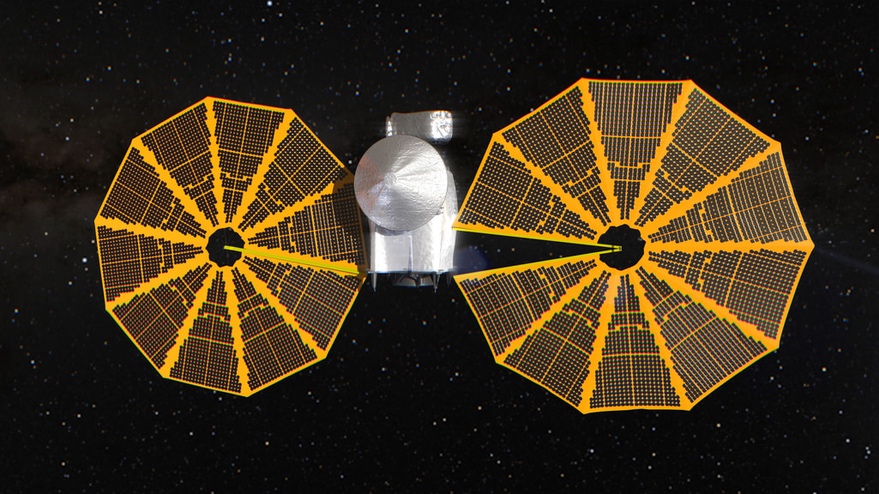WASHINGTON — NASA is suspending efforts, at least until late next year, to try to fully deploy a solar array on its Lucy spacecraft, citing diminishing returns as the spacecraft heads away from the sun.
In a statement quietly posted on NASA’s website Jan. 19, the agency said the latest effort to latch one of two solar arrays on Lucy, more than a month earlier, failed to complete the deployment of the circular array and lock it into place. That effort, NASA said, “produced only small movement in the solar array.”
The mission has been working to fully deploy the solar array since shortly after its launch in October 2021. While one of the arrays, 7.3 meters in diameter, unfolded and latched into place as designed, the other did not. Engineers spent months diagnosing the problem, concluding a loss in tension in a lanyard used to deploy the array kept it from fully unfolding and latching into place.
NASA has played down the problem, noting that engineers believe the array is almost completely unfolded and appears to be stable. That was based on the array’s performance during a gravity-assist flyby of the Earth Oct. 16, when it passed less than 400 kilometers above the Earth, through the tenuous upper reaches of the atmosphere, with no issues.
However, spacecraft controllers have attempted since that flyby to try to complete the array’s deployment and lock into place. One attempt Nov. 7 “deployed the wing incrementally forward,” NASA said, but controllers also noticed a small vibration in the array, which engineers concluded was the result of an interaction between the motor and the structural modes of the array.
After adjusting the motor, NASA tried again Dec. 13, but noticed that progress had “decreased to minimal levels,” which engineers concluded was due to the dropping temperatures as Lucy moves further from the sun.
“NASA’s Lucy mission team has decided to suspend further solar array deployment activities,” the agency said in its latest statement. “The team determined that operating the mission with the solar array in the current unlatched state carries an acceptable level of risk and further deployment activities are unlikely to be beneficial at this time.”
The agency has not ruled out another attempt to lock the array, but not until the spacecraft makes its next close approach to the Earth in late 2024, warming it enough to make progress more likely. Those plans will also depend on the stability of the array during the first maneuver by the spacecraft’s main engine in February 2024.
Even if the array does not fully unfold and latch, NASA said that the array, 98% deployed, can generate enough power for the spacecraft to complete its mission, flying by one main belt asteroid and seven Trojan asteroids at Jupiter’s distance from the sun. Those flybys will take place between 2025 and 2033.
